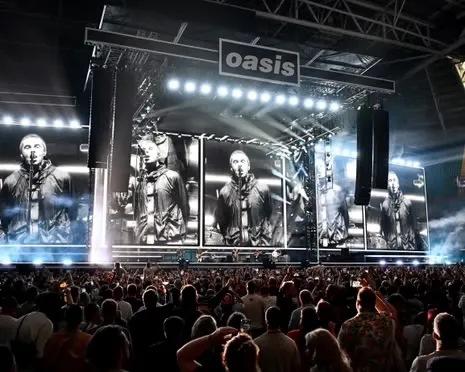
Who was the Oasis comeback aimed at? Really aimed at?
When Oasis announced their reunion tour, the music industry watched two distinct demographic strategies collide. Would nostalgia-driven Gen X and Millennials dominate ticket sales, or would Gen Z's documented higher concert spending frequency carry the day?
The strategy worked. Oasis fans will spend a predicted £1.06 billion across just 17 UK concerts. That's more than Taylor Swift's entire UK Eras Tour generated.
Two different approaches. Two different results. Both reveal how the industry follows the money trail.
Following the Money Trail
The concert industry operates on a simple principle: match the artist to the demographic with the deepest pockets.
Recent data reveals fascinating patterns in how different generations approach live music spending.
Gen Z might spend more monthly on concerts overall, but their spending spreads across multiple smaller events. They're building habits, exploring genres, discovering new artists.
Gen X and Millennials concentrate their spending. They pay premium prices for specific experiences. They'll drop serious money on artists that defined their youth.
The data supports this targeting strategy. Among Oasis ticket holders, 47% have seen the band before. Another 36% caught Noel or Liam's solo projects. These aren't casual fans making impulse purchases.
They're committed buyers with established emotional connections and disposable income.
What This Means for the Industry
The generational spending patterns reveal two distinct market strategies emerging.
Volume Strategy: Target Gen Z with frequent, accessible events. Build long-term relationships. Capture their growing spending power as their careers advance.
Premium Strategy: Target Gen X and Millennials with high-value nostalgia events. Extract maximum revenue from established fans with peak earning power.
Neither approach is wrong. Both respond to economic realities.
Gen Z's monthly concert spending might lead the charts, but their individual event spending often stays modest. They're price-sensitive but frequency-driven.
Older generations spend less frequently but pay significantly more per event. They prioritize quality over quantity.
The Future of Concert Economics
Goldman Sachs predicts that Millennials and Gen Z will see their "income, wealth and spending power grow rapidly" as they advance in their careers.
This creates a fascinating industry dynamic. Gen Z already shows the highest spending frequency. As their individual purchasing power grows, they could dominate both volume and premium markets.
Meanwhile, Gen X approaches peak earning years. Their nostalgia-driven spending power remains formidable.
The industry will likely continue dual-track strategies: frequent, accessible events for younger demographics and premium, experience-driven events for established fans.
The Verdict: Who's Really Paying?
The Oasis reunion proves that nostalgia economics work when you target the right demographic at the right time. While Gen Z leads in spending frequency, Gen X and Millennials dominate the premium market with their willingness to pay top dollar for meaningful experiences.
The £1.06 billion Oasis phenomenon reveals the industry's future: it's not about choosing between generations, but understanding how each contributes to the ecosystem. Gen Z builds the foundation with consistent, frequent spending. Gen X and Millennials provide the blockbuster moments that generate headlines and massive revenue.
Both generations are building the industry's future. They're just doing it differently—and the smart money follows both trails.
